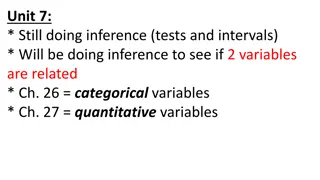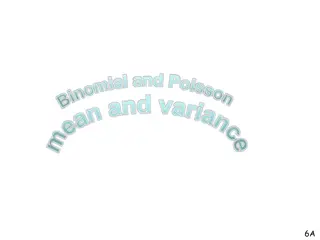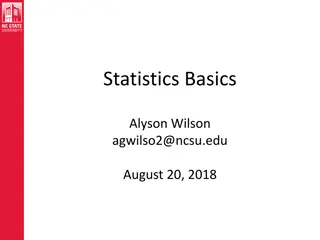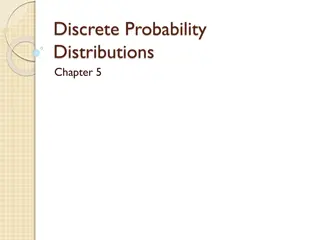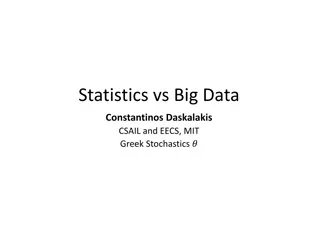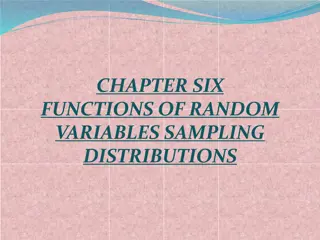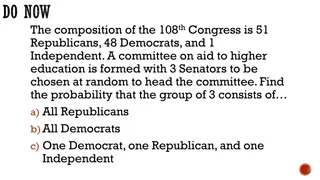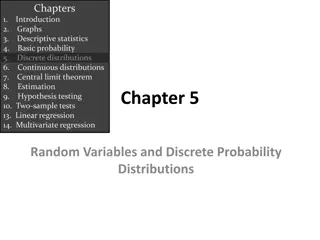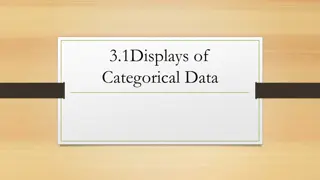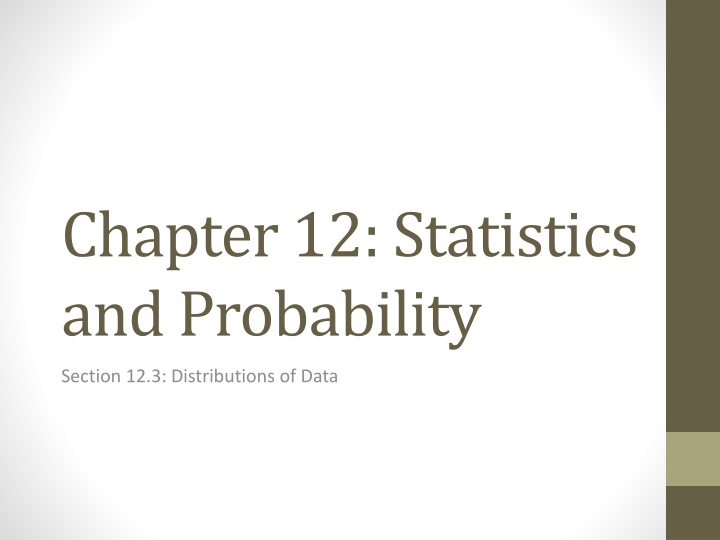
Distributions in Statistics and Probability
Learn about distributions of data and how to interpret them using histograms and box-and-whisker plots. Discover the shapes of distributions and how they impact statistical analysis in this comprehensive guide.
Download Presentation

Please find below an Image/Link to download the presentation.
The content on the website is provided AS IS for your information and personal use only. It may not be sold, licensed, or shared on other websites without obtaining consent from the author. If you encounter any issues during the download, it is possible that the publisher has removed the file from their server.
You are allowed to download the files provided on this website for personal or commercial use, subject to the condition that they are used lawfully. All files are the property of their respective owners.
The content on the website is provided AS IS for your information and personal use only. It may not be sold, licensed, or shared on other websites without obtaining consent from the author.
E N D
Presentation Transcript
Chapter 12: Statistics and Probability Section 12.3: Distributions of Data
Quote of the Day Be kind, for everyone you meet is fighting a hard battle. Plato
Then/Now You calculated measures of central tendency and variation. Describe the shape of a distribution. Use the shapes of distributions to select appropriate statistics.
Vocabulary A Distribution of data shows the observed or theoretical frequency of each possible data value. A Histogram is a type of bar graph used to display data that have been organized into equal intervals. A histogram is useful when viewing the overall distribution of the data within a set over its range. You can see the shape of the distribution by drawing a curve over the histogram
Example 1 Distribution Using a Histogram Use the following data to construct a histogram and use it to describe the shape of the distribution. Group the data by intervals of 4. (0-4, 5-8, 9-12, etc .) 9, 18, 22, 12, 24, 25, 19, 25, 2 5, 28, 12, 22, 19, 28, 15, 23, 6 8, 27, 17, 14, 22, 21, 13, 24, 21 9, 25, 16, 24, 16, 25, 27, 21, 10
Example 1 Distribution Using a Histogram Answer: The distribution is negatively skewed.
Notes A box-and-whisker plot displays the spread of a data set by dividing it into four quartiles. The lowest data value is represented by the farthest left point The highest data value is represented by the farthest right point The median is the middle of the box The median of the lower half of the data is the left side of the box The median of the upper half of the data is the right side of the box A box-and-whisker plot can also be used to identify the shape of a distribution.
Example 2 Distribution Using a Box-and-Whisker Plot Use the data below to construct a box-and-whisker plot and use it to determine the shape of the distribution. 9, 18, 22, 12, 24, 25, 19, 25, 2 5, 28, 12, 22, 19, 28, 15, 23, 6 8, 27, 17, 14, 22, 21, 13, 24, 21 9, 25, 16, 24, 16, 25, 27, 21, 10
Example 2 Distribution Using a Box-and-Whisker Plot Answer: The right whisker is longer than the left, and the median is to the left of the plot. Thus, the distribution is positively skewed.
Notes You now have two methods that you can use to describe data using statistics. The mean and median describe the center. The Standard Deviation and quartiles describe the spread. You can use the shape of the distribution to choose the most appropriate statistics that describe the center and spread of a set of data.
Notes Outliers can have a strong effect on the mean of a data set, while the median is less affected. So, when the distribution is skewed, the mean lies away from the majority of the data toward the tail. The median is less affected and stays near the majority of the data. When choosing appropriate statistics to represent a set of data, first determine the shape of the distribution If the distribution is relatively symmetric, the mean and standard deviation can be used If the distribution is skewed or has outliers, use the five-number summary.
Example 3 Choose Appropriate Statistics Describe the center and spread of the data using either the mean and standard deviation or the five- number summary. Justify your choice by constructing a histogram for the data. 78, 68, 72, 71, 79, 67, 71, 78, 70 80, 76, 82, 82, 70, 84, 72, 71, 85 67, 86, 74, 86, 73, 72, 77, 87, 70 66, 88, 75, 72, 76, 71, 90, 69, 94
Example 3 Choose Appropriate Statistics Answer: The range is 64 96 or 28. The median is 74.5, and half of the data are between 71 and 82.


